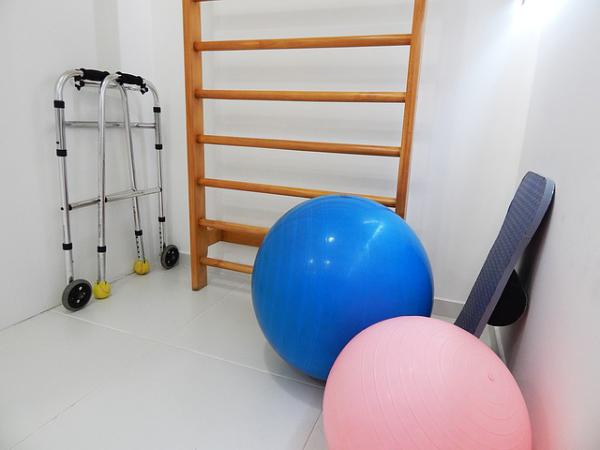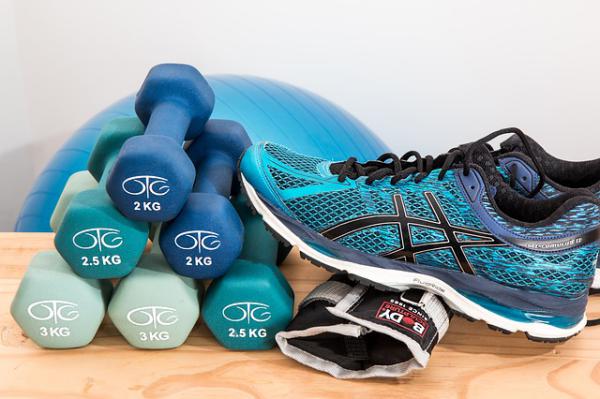Latest News and Information
Common Causes for Headaches and Using Physical Therapy in LaGrange, WY to Help
April 4, 2018
Headaches are a common occurrence in nearly 50 million Americans each year. For some, it may be an occurrence that happens every couple months, while for others, headaches happen daily. Regardless of the frequency, they are a nuisance and, in some cases, debilitating. If you are a frequent headache-sufferer, it is best to explore your options for relief and talk to your doctor. There could be an underlying issue that needs solved. Your doctor can assist you to discover the root of your headaches and having premier Cheyenne, WY physical therapy assist.
If you are ready to get help with your headaches and migraines, North Platte Physical Therapy is your go-to local physical therapist. Our team will work with you to create a series of exercises to provide relief and enhance the quality of your life. Never been to a physical therapist before? Here is what to expect on your first visit to North Platte Physical Therapy. Get started and contact North Platte Physical Therapy today to find a location near you.
Read More...
Types of Headaches
Headaches can occur for a variety of reasons. In the Mayo Clinic’s causes for headaches, they explain there are five different types: cluster, migraine, migraine with aura, tension headache, and trigeminal autonomic cephalgia (TAC)—known as a “cluster headache.†Within this group, there are actually over 100 types of headaches and causes. Some of the main causes of headaches include:- Light sensitivity
- Food and alcohol
- Glare from TV, computer or smartphone screens
- Overexertion while exercising or lack of exercise
- Stress and anxiety
- Dehydration
- Lack of sleep
- Poor posture
- Cold, allergies or sickness
- TMJ disorder
Difference Between a Migraine and a Headache
There are specific differences between headaches and migraines. Headaches are painful, often with an ache or pressure feeling. They can occur anywhere on the head such as the temples, eyes, or back of the head. They are uncomfortable and painful. Migraines take things a step further. In addition to the pain in your temples, forehead, etc., there are additional symptoms. Nausea, pain behind the eye, and light sensitivity are some of the common symptoms. In addition, migraines can actually impact your vision by causing spots or “floaters†to appear in your line of sight. In other cases, your eye may severely blur, making it difficult to see. Many migraine sufferers experience “auras,†also known as an ocular migraine. This means part of your vision is affected, more than usual. Auras can cause blind spots, zig zags or pixelated vision, and flashing. In addition, some have reported hallucinations. When a migraine sets in, it makes it very difficult to function. If you notice you have migraines often, it is important to speak with your doctor about them as soon as possible.Ways to Alleviate Symptoms
There are several ways to cope with headaches and migraines. You definitely do not need to suffer. One of the top ways people treat their migraines is with medication. Medications such as Excedrin have a combination of acetaminophen and/or aspirin, as well as and caffeine to help combat symptoms fast. Next are oils. Lavender and peppermint are soothing. You can actually go to your local drug store to find roller sticks. Food and water may also impact your headaches. Make sure to eat a healthy diet and always stay hydrated. Last, you can also treat your headaches with physical therapy. They will work with you to reduce stress and tension that may be negatively impacting you body.If you are ready to get help with your headaches and migraines, North Platte Physical Therapy is your go-to local physical therapist. Our team will work with you to create a series of exercises to provide relief and enhance the quality of your life. Never been to a physical therapist before? Here is what to expect on your first visit to North Platte Physical Therapy. Get started and contact North Platte Physical Therapy today to find a location near you.
Use Physical Therapy in Casper, WY for Your Child's Walking Issues
March 28, 2018
If your child is not walking properly, it is best to address and handle the issue right away to avoid larger issues later in life. While getting started can seem overwhelming, your doctor and local physical therapy in Casper, WY is there to help. Learn more about what toe walking is, top signs to watch out for, and how to care with a quality physical therapist by your side.
If you notice your child is toe walking past their toddler years, contact North Platte Physical Therapy for help. We have a variety of locations to make it convenient for your family’s schedule. Contact us today to get started.
Read More...
What is Toe Walking?
When a person walks normally, they propel themselves starting with the heel of the foot hitting the ground first, then rolling up to the ball of the foot and toes. This will help build momentum for a forward motion. However, it is fairly common for children to get into the habit of walking on their toe or the balls of their feet. While many outgrow this way of walking, some do not. If you notice your child is toe walking past their toddler years, it is important to have a conversation with your doctor.Common Causes, Signs and Symptoms
The main thing to watch for in children that toe walk is their progression. If a toddler continues to walk on the tip of their toes or top of their feet, it could be due to condition. Some of these include:- Autism: Toe walking occurs in children with autism because it is a neurological disorder. For some children, they are sensitive to different sensation and prefer toe walking. Regardless, it will need to be corrected.
- Cerebral palsy: Children with cerebral palsy may commonly toe walk because they do not have the muscle functionality that allows them to do so.
- Muscular and spinal issues: For those with issues with their spinal cord, or have muscular dystrophy, may be more likely to toe walk due to neurological issues.
- Shortened Achilles tendon: When the Achilles tendon, which connects the bottom part of the leg to the heel of one’s foot, it can create issues. One of the key signs is toe walking as a child physically struggles with letting their heel hit the ground when they walk.
Care and Physical Therapy
No matter what the reason is for your child’s toe walking, you can have a conversation with your doctor on care tips. In addition, a physical therapist will be your go-to solution. Specializing in pediatric therapy, premier physical therapists are trained to create custom plans for children with motor impairments.If you notice your child is toe walking past their toddler years, contact North Platte Physical Therapy for help. We have a variety of locations to make it convenient for your family’s schedule. Contact us today to get started.
Ways Wheatland Physical Therapy Can Ease Plantar Fasciitis
March 21, 2018
A quarter of Americans are coping with a painful foot condition: Plantar fasciitis. Due to inflammation in the area, every day activities such as walking can be difficult. Seeking help is important to be able to handle day-to-day tasks. Learn more about plantar fasciitis, ways to manage the condition, and top ways to incorporate Wheatland physical therapy and all our other locations in your recovery plan.
This condition can occur due to a variety of reasons including:
In addition, they may also recommend a night splint if your ankle or toes are not in their proper position. Taping is also common for quick relief in some instances. They will walk you through each of these steps.
As you are working to find a solution for your plantar fasciitis, North Platte Physical Therapy can help. We treat a variety of orthopedic injuries, including plantar fasciitis, and will help you get on the path to recovery. With locations all over Wyoming and one in Gering, Nebraska, you are sure to find an office near you. Get started and contact us today!
Read More...
What is Plantar Fasciitis?
Plantar fasciitis occurs when the thick band of tissue that connects the heel of your foot to your toes becomes inflamed. This inflammation can happen due to small tears to the ligament, anywhere in the area, causing the bottom of the foot and/or the heel to be in pain.This condition can occur due to a variety of reasons including:
- Wearing improper footwear for specific tasks
- Landing on the feet improperly after a jump
- Failure to properly stretch before exercising
- Being on your feet all day without breaks
- High arches or flat feet
- Overweight
Go-To Ways to Cope
If you feel you may have plantar fasciitis, it is important to see your doctor. They will be able to assess the severity of your individual situation. In addition, there are other things you can do to ease the pain.- Make sure you have time in your day where you can be off your feel and allow them to rest, so the swelling reduces
- Purchase custom shoes or shoe inserts with arch support that will help cushion the area
- Take anti-inflammatory medications
- Ice the area
Top Ways to Incorporate Physical Therapy
In addition to your doctor’s treatment recommendations, premier physical therapy will also help alleviate the symptoms of plantar fasciitis. How? Through various exercises tailored to your specific situation, your local physical therapist will help you strengthen the muscles in the area.In addition, they may also recommend a night splint if your ankle or toes are not in their proper position. Taping is also common for quick relief in some instances. They will walk you through each of these steps.
As you are working to find a solution for your plantar fasciitis, North Platte Physical Therapy can help. We treat a variety of orthopedic injuries, including plantar fasciitis, and will help you get on the path to recovery. With locations all over Wyoming and one in Gering, Nebraska, you are sure to find an office near you. Get started and contact us today!
Understanding Myofascial Pain Syndrome and Using Physical Therapy in Cheyenne, WY
March 13, 2018
Do you have consistent pain that you feel deep in your muscles? It may not be something that will go away on its own, especially if it is myofascial pain syndrome. It is important to recognize the top symptoms of this condition, and work with your doctor for treatment. In addition, local physical therapy in Cheyenne, WY will also help during the healing process.
Â
If you are coping with myofascial pain syndrome, our team at North Platte Physical Therapy will create a plan unique to your recovery. This is pain you do not have to deal with and we will work with you to restore the quality of your muscles. Contact us today to schedule your appointment.
Read More...
What is myofascial pain syndrome?
Myofascial pain syndrome is a chronic pain felt within one’s muscles. It occurs when there is inflammation, often causing a feeling that there is a knot. This pain is from the fascia, hence the name, which is the connective tissue over the muscles. It can be in one muscle, or several. Many people experience muscle pain, especially strains. Myofascial pain syndrome is a condition where the pain does not improve and worsens over time.Signs and symptoms
One of the go-to signs you may have myofascial pain syndrome is a tender to deep pain within your muscles. This can occur anywhere from the neck and shoulder, to the upper or lower back region. More specifically, it may feel like a knot that you can’t get out of an area that may also spasm. It can cause discomfort during the day and make it difficult to sleep at night. There may be a noticeable swelling in the area, along with a warming sensation.Possible causes
Myofascial pain syndrome can be caused by a variety of reasons. One of the most common is repetitive motions or overuse. When this occurs, it develops trigger points within the muscles, causing improper blood flow. It can be contained to one area or radiate to other areas in the body.When to see a doctor
It is best to see a doctor when you know your muscle pain is severe or unusual for you. If it persists for weeks, or shows any of the symptoms above, call your doctor so you can work to a plan of recovery as soon as possible. To help with relief, they may recommend anti-inflammatory medication, such as ibuprofen, or pain medication. Icing the area can help, too. In other cases, if swelling and pain is on the severe side, steroids may be prescribed.Using physical therapy to treat
Your premier physical therapist will play a crucial role in your recovery. Two ways they can help are through massage and trigger point therapy. With massage therapy, your physical therapist will use various therapeutic massage techniques to help relax your muscles. Second, trigger point therapy, also known as dry needling, may also be used. This form of therapy will help break up the trigger points and knots in the muscles, allowing for relief and range of motion.Â
If you are coping with myofascial pain syndrome, our team at North Platte Physical Therapy will create a plan unique to your recovery. This is pain you do not have to deal with and we will work with you to restore the quality of your muscles. Contact us today to schedule your appointment.
Benefits of Physical Therapy You May Not Have Considered From a Physical Therapist in Hulett, WY
March 7, 2018
There are a plethora of benefits to receiving physical therapy which are commonly known. Things such as pain management and mobility improvements are the more well-known positive outcomes for seeking the services of a physical therapists. But there are some lesser known benefits to be aware of from receiving treatment from a physical therapist in Cheyenne WY.
Receiving physical therapy services can also improve a person’s balance and prevent falls as a result. Your equilibrium may be off after suffering from a stroke, and PT can help improve this aspect of your life. Physical therapists will give you exercises that mimic real-life situations as a way to prepare your body when you are in the moment. These exercises can help improve a person’s coordination, and may also provide you with assistive devices that make the recovery process smoother.
A well-qualified physical therapist can improve a client’s ability to move and transfer in their bed. This can allow a person to become more independent in their own home, as they will be more able to move around their house with ease and without the services of a caretaker or being assisted by a loved one. Physical therapy can ease the burden of everyday self-care activities, such as using the toilet, dressing, bathing, and all other daily habits that may become difficult after a stroke.
If you are in need of physical therapy, or have questions about what physical therapy consists of, contact North Platte physical therapy today and we will be happy to assist you with your first steps towards recovery.
Read More...
Diabetes and Vascular Management
An area of health that receives benefits from physical therapy that is not often thought about is the area of vascular management and diabetes treatment. Exercise can be a primary component of proper diabetes management, as it can help manage blood sugar levels. Your physical therapist can help with these conditions by recommending appropriate exercises that will help alleviate your symptoms. A physical therapist can also provide you with the necessary information to properly address this serious medical condition.Heart and Lung Disease Management
While sprained ankle and broken bones may be the most commonly thought of condition treated by a physical therapist, your internal health can also be positively affected by your PT. For those who are suffering from pulmonary problems, physical therapy can be a beneficial modality to utilize. PT can help with these conditions through strength and conditioning and breathing exercises, which can help a client clear fluid from their lungs.Stroke Recovery
Another condition that can benefit immensely from physical therapy is when you suffer a stroke. Recovering from a stroke can be a lengthy process, and the recovery process can be aided by the proper amount of physical therapy exercises. Physical therapy helps stroke victims by strengthening parts of the body that were weakened by the stroke, and it can also improve a person’s gait and balance, things that are commonly deficient after a stroke.Receiving physical therapy services can also improve a person’s balance and prevent falls as a result. Your equilibrium may be off after suffering from a stroke, and PT can help improve this aspect of your life. Physical therapists will give you exercises that mimic real-life situations as a way to prepare your body when you are in the moment. These exercises can help improve a person’s coordination, and may also provide you with assistive devices that make the recovery process smoother.
A well-qualified physical therapist can improve a client’s ability to move and transfer in their bed. This can allow a person to become more independent in their own home, as they will be more able to move around their house with ease and without the services of a caretaker or being assisted by a loved one. Physical therapy can ease the burden of everyday self-care activities, such as using the toilet, dressing, bathing, and all other daily habits that may become difficult after a stroke.
If you are in need of physical therapy, or have questions about what physical therapy consists of, contact North Platte physical therapy today and we will be happy to assist you with your first steps towards recovery.




